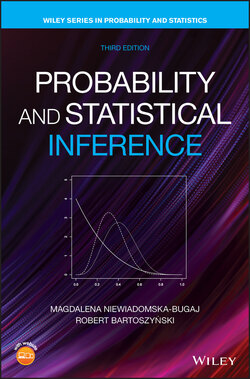Читать книгу Probability and Statistical Inference - Robert Bartoszynski - Страница 32
Example 1.15
ОглавлениеSuppose that shots are fired at a target, and let , denote the event “the target is hit on the th shot.” Then, the union is the event “the target is hit” (at least once). Its complement is the event “the target is missed” (on every shot), which is the same as the intersection .
A perceptive reader may note that the unions and intersections do not require an extension of the definition of union and intersection for two events. Indeed, we could consider unions such as
where the union of only two events is formed in each set of parentheses. The property of associativity (below) shows that parentheses can be omitted so that the expression is unambiguous. The same argument applies to intersections.
The operations on events defined in this section obey some laws. The most important ones are listed below.
Idempotence:
Double complementation:
Absorption:
(1.3)
In particular,
which in view of (1.3) means that .
Commutativity:
Associativity:
Distributivity:
De Morgan's Laws:
(1.4)
It is often helpful to use Venn diagrams for studying relations between composite events in the same sample space. The sample space is there represented by a rectangle, while its subsets represent events (see Figure 1.5).
Figure 1.5 Complement, union, and intersection.
The complement of event is represented in Figure 1.5a, the union and intersection of the events and are represented in Figure 1.5b and c, respectively.
Venn diagrams can also be used to check the validity of formulas. For example, consider the first De Morgan's law (1.4) for the case of two events:
(1.5)
Venn diagrams made separately for the left‐hand side and the right‐hand side of (1.5) (see Figure 1.6) indicate that both regions are the same. Although a picture does not constitute a proof, it may provide convincing evidence that the statement is true, and sometimes may even suggest a method of proving the statement.
Figure 1.6 The first De Morgan's law.
